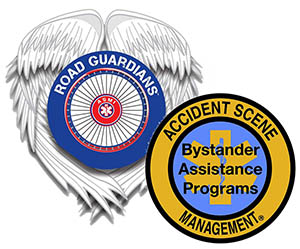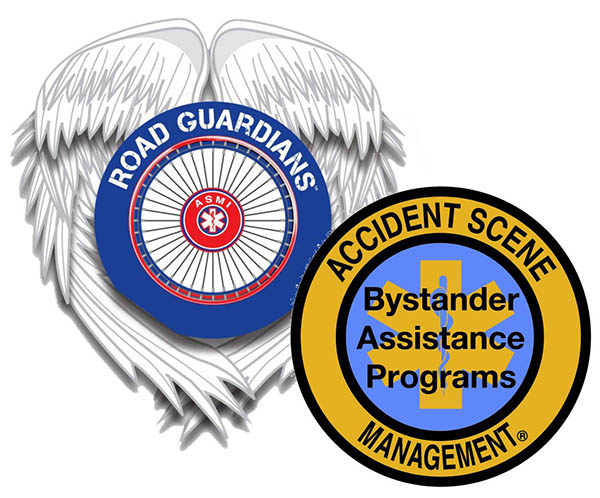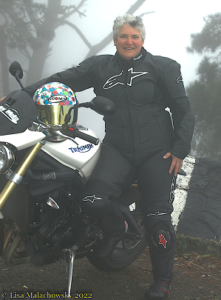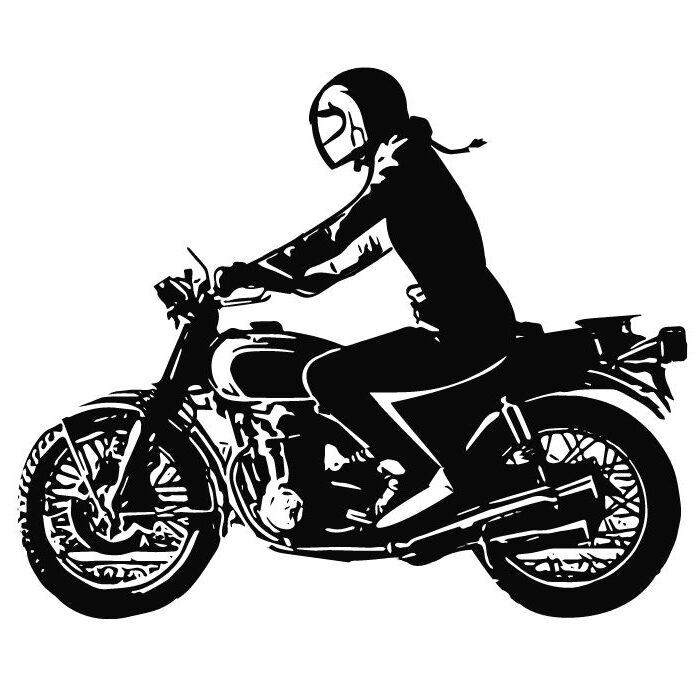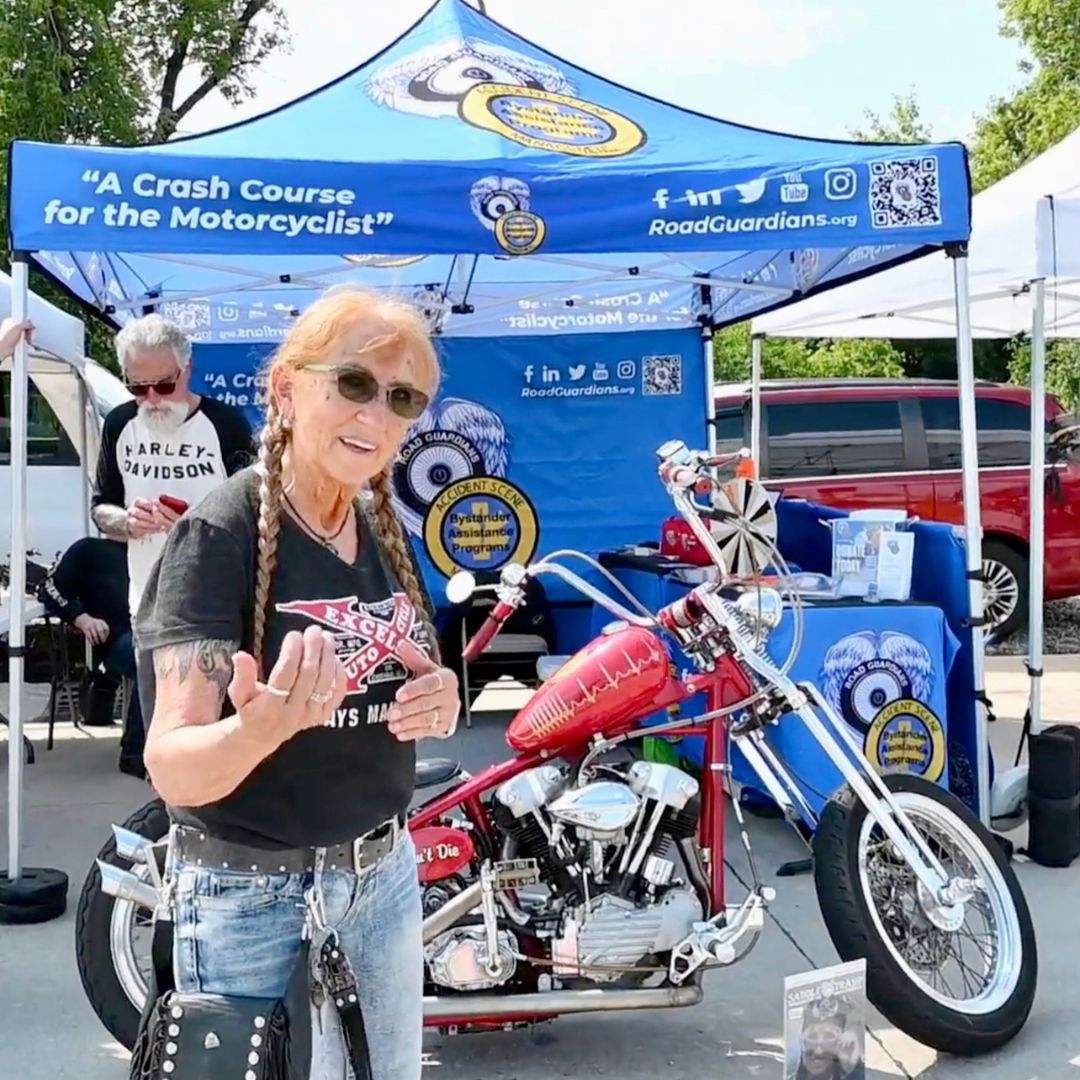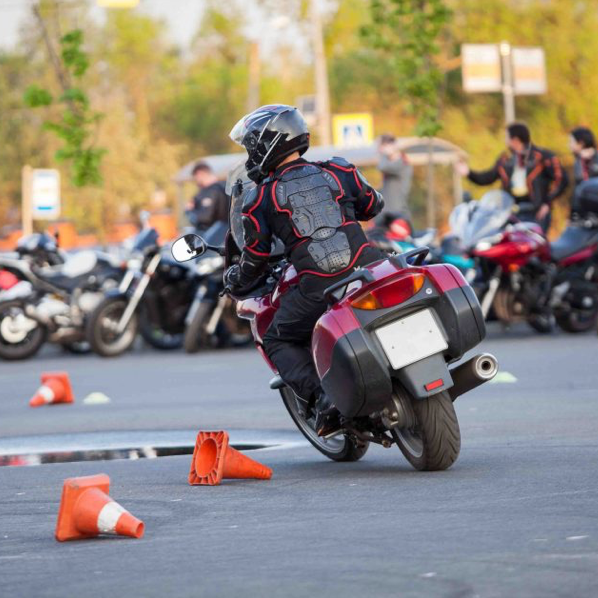
Want to be an exceptional motorcyclist? Take a training class.
Written by Lisa Malachowsky
Provided by:
The data on training
“The motorcycle riders involved in accidents are essentially without training; 92% were self-taught or learned from family or friends. Motorcycle rider training experience reduces accident involvement and is related to reduced injuries in the event of accidents.”
Those two sentences are direct quotes from the Hurt Report. If you are not familiar with it, the Hurt Report is a landmark study on motorcycle safety in the US begun in 1976 and published in 1981 by the National Highway Traffic Safety Administration. It is named after its primary author, Professor Harry Hurt, of the University of Southern California. Professor Hurt was also an avid, lifelong motorcyclist.
If you have read the book Proficient Motorcycling you might be familiar with its author, David L. Hough. He has said that the Hurt Report is “the most comprehensive motorcycle safety study of the 20th century.”
Here are a few additional key findings from the report:
- Approximately one-fourth of these motorcycle accidents were single vehicle accidents involving the motorcycle colliding with the roadway or some fixed object in the environment.
- Vehicle failure accounted for less than 3% of these motorcycle accidents, and most of those were single vehicle accidents where control was lost due to a puncture flat.
- In the single vehicle accidents, motorcycle rider error was present as the accident precipitating factor in about two-thirds of the cases, with the typical error being a slide-out and fall due to over-braking or running wide on a curve due to excess speed or under-cornering.
- More than half of the accident-involved motorcycle riders had less than 5 months experience on the accident motorcycle, although the total street riding experience was almost 3 years. Motorcycle riders with dirt bike experience are significantly underrepresented in the accident data.
- Motorcycle riders in these accidents showed significant collision avoidance problems. Most riders would over-brake and skid the rear wheel, and under-brake the front wheel greatly reducing collision avoidance deceleration. The ability to counter-steer and swerve was essentially absent.
- The typical motorcycle accident allows the motorcyclist just less than 2 seconds to complete all collision avoidance action.
Unfortunately, the Hurt Report has not been updated for 21st century riders. It’s reasonable to suggest that the report and its findings are out of date. In 1999, David Hough interviewed Harry Hurt and asked him if the report was still valid then. Hurt replied, “The more time goes by, the less things look different. Riders today have the same sort of accidents as riders in the 1970s, except that today they crash much more expensive bikes.”
So, the best data we have shows that most motorcycle crashes could probably be avoided if the riders had better skills. And that the most likely reason riders don’t have the skills they need is because they haven’t had professional training in those skills.
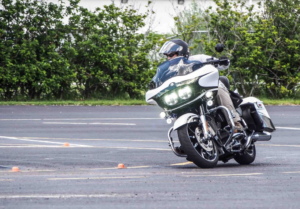
Training can—and probably will—save your life
Riding a motorcycle presents much greater risks than driving a car. Data from the National Highway Traffic Safety Administration shows that in 2019 motorcycles comprised just three percent of registered vehicles in the US and represented just 0.6 percent of vehicle miles traveled. Yet the rate of fatalities per vehicle miles traveled was 29 times greater for motorcyclists than for occupants of passenger cars.
The best way to avoid getting killed on a motorcycle is to avoid crashing. The best way to avoid crashing is by having excellent riding skills. And the best way to get those skills is by learning them from a professional trainer.
Practice doesn’t make perfect
Maybe you’ve had some professional training. Perhaps you took a basic learn-to-ride course quite a few years back and got that motorcycle endorsement on your drivers license. Or maybe a friend or family member helped you get started and then you practiced until you were good enough to pass the riding test at the DMV.
How long ago was that? Five years? Ten? Twenty?
If you’ve been riding for a few years you have almost certainly picked up some bad habits along the way. And, without realizing it, you’ve been practicing those habits until you perform them without thinking about it. You’ve unconsciously trained yourself on some poor skills.
Those are the skills you will rely on in the two seconds prior to a crash.
There is nothing else like professional coaching
If you knew you had those bad riding habits, and you knew what they were, you would change them, right? Of course you would.
That’s the difference between getting help from a professional trainer and just trying to get better on your own. There’s probably room for improvement in your riding skills that you’re not even aware of.
A professional coach will watch you ride and will see things that you can’t see. A good trainer will offer constructive criticism and show you exactly what you need to do to become a better rider.
You might have a riding buddy that will offer to help you work on your skills. Maybe watch you ride and make a few suggestions on how to get better. That person might even be one of the best riders you know.
But they’re probably not a professional motorcycle trainer. They are unlikely to have the experience of watching hundreds of riders under controlled conditions and showing them exactly how to get better at their craft. Your riding buddy is probably not a professional educator.
And if your riding buddy is a professional motorcycle coach they’re probably going to tell you the best way to become a better rider is to take a training class.
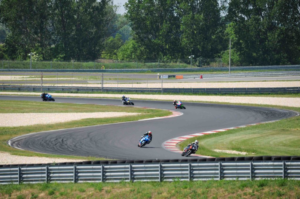
Training is fun
Training is work. And training hard is hard work. But it can also be a lot of fun. Working at something until you become demonstrably, measurably, better at it is tremendously satisfying.
Think about a day, or a weekend, spent hanging out with other motorcyclists. Imagine that everyone is there to become a better rider and that some of those folks might be the most skilled riders you’ve ever met. Now think about all of that in a safe, controlled environment, where you don’t have to worry about people in cars doing things that put you at risk.
That’s what most motorcycle training classes are like.
If you’ve been to a police motor officer competition then you know how much fun it is to watch. And you know how much fun these motorcops have when they get together.
One of the highlights of most police motorcycle competitions is an event called Last Man Standing. The riders enter a small space enclosed by traffic cones, with more cones randomly strewn about inside. The goal is to be the last rider still moving. If you hit a cone, put a boot down, or drop your bike, you’re out of the competition. But being out of the competition means staying on the course and you and your bike instantly become additional obstacles that the remaining competitors need to work around.
It’s huge fun to watch and even more fun to ride.
Motorcop training schools developed this event as a way to gameify skills training. They found that by getting their students to concentrate on winning the game, rather than the details of making tight turns at low speeds, the riders build their skills much more quickly.
Some motorcop training programs are open to riders who aren’t in law enforcement. Some are run by police departments and open to civilians. Others are run by retired motorcops and open to anyone.
Training with motor officers is hard work and huge fun, especially if the course includes a few rounds of Last Man Standing.
Training is affordable
Motorcycle training classes are generally not expensive.
A two-day Motorcycle Safety Foundation Advanced Rider Course is widely available in most mid-to-large-size cities in the US. Prices vary widely depending on location but you can typically expect to pay between about $100 to $300. This course is a significant step up from the MSF Basic Rider Course that you might be familiar with.
The Total Control Advanced Riding Clinic is a one-day course that costs about $300 to $400, depending on where you take it.
Socal Supermoto School offers a one-day supermoto school on pavement and dirt, with a loaner bike, for less than $350 in Riverside, California.
The Yamaha Champions Riding School offers its one-day ChampStreet training course here in Arizona, in February, for about $500. The course is also offered at other locations around the country, at different prices.
That’s just a quick sample of different training courses for experienced riders that all cost about what you will pay for a quality riding jacket.

Training is an investment in yourself
Training for experienced riders is a lot different from a basic learn-to-ride course. It’s not about learning how to balance the bike and pull away from a stop sign without too much jerking. It’s about refining your skills. About learning how to be smoother, more confident, and safer. About being really ready to use your advanced skills to deal with a dangerous situation and avoid a crash.
Training is investing in yourself. It means you have the desire and the commitment to become a better motorcyclist.
Training for when things go bad
There are a couple of other kinds of training that you might want to consider.
If you don’t already have some basic first-aid training, or it’s been a while since you’ve had any, go take a class. Organizations such as the Red Cross and the National Safety Council offer basic and advanced first aid training around the country.
If you like to travel in places where there might not be a hospital nearby, consider a Wilderness First Aid training course from NOLS, the National Outdoor Leadership School.
Stop the Bleed is a training class from the American College of Surgeons. It is designed specifically to train regular folks to save a person from bleeding to death before professional responders arrive.
And finally, Accident Scene Management (ASM) offers basic and advanced training certification courses to help you become a “motorcycle first responder.” The courses go way beyond simple first aid. They cover things like jaw-thrust rescue breathing, helmet removal, traffic control, and moving the injured.
Training with Lisa
I think that anyone who wants to be a safer motorcyclist should up their game by taking some training classes. There are lots to choose from.
Training is so important to me that I am a professional trainer. I’m a Total Control Training Motorcycle Safety Instructor and I’m an Accident Scene Management Lead Instructor.
If you would like to train with me, get in touch and I’ll tell you about my next classes.
And please, go take a training class, soon.
To find an ASM Lead Instructor in your area click HERE
For more information about classes in your area click HERE
Enjoy this write-up? Read the original article on Diva and Ride Adventures
